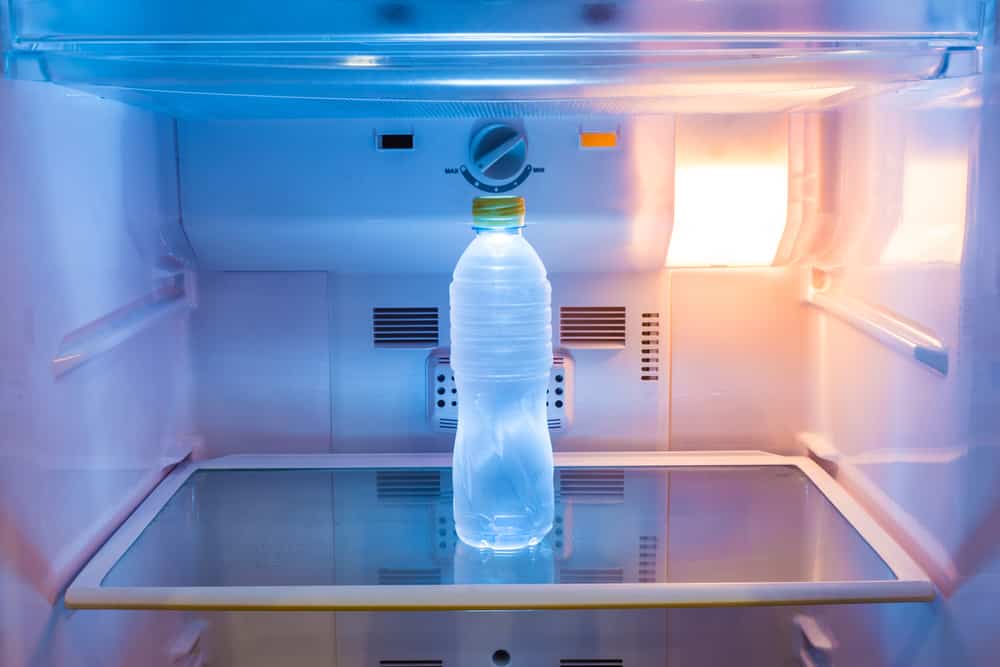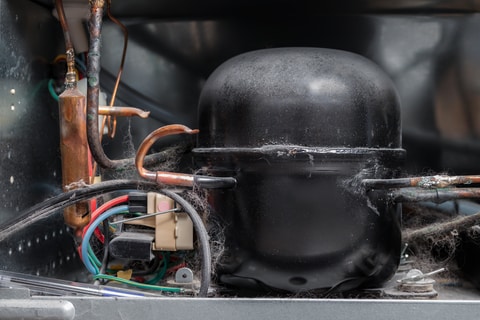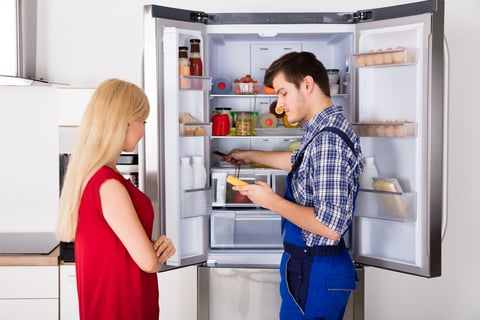
Fridges have been around for quite some time and are used extensively all over the world, thanks to their benefits. Not only does it enable you to keep food fresher longer, but it also extends the shelf life of meat.
In addition, you can also store quick-cook foods and processed foods in a refrigerator. Refrigeration is also useful for transporting food to distant places. Various problems can cause a refrigerator that isn’t cooling even if the light is on.
While some problems are easy to fix, some require professional help. Before attempting to fix your refrigerator, you should consult the owner’s manual.
It should give you specific instructions on how to care for your refrigerator. This article will provide a few different ways to fix your fridge.
How to Fix Fridge Not Cooling but Light Is On?
- Check Power Source
The first step in diagnosing a refrigerator that is not cooling properly is to check the power source. First, make sure the refrigerator is plugged into a functional outlet.
If this is not the problem, check the wiring, including the refrigerator power cord and the power supply unit. If the power source is not working properly, then call an electrician. In some cases, a defective power cord is a culprit behind the fridge not cooling properly.
These power cords usually damage over time due to age-related wear and tear. If the power cord is damaged, it needs to be replaced. You can also repair it if it is damaged slightly. You will need a soldering tool for this purpose.
- Checking the Temperature of the Fridge
A fridge can get too hot or too cold, depending on the temperature. It could spoil food if it is set too high. To ensure that the food in your fridge doesn’t spoil, check its temperature every once in a while. If your fridge isn’t cooling, you may have set the temperature too high.
This can happen if you have children or have house guests who are not considerate of what is inside. Try lowering it gradually. You can check the temperature of your fridge with a regular body thermometer.
The regular thermometer can be placed in a cup of water and inside the fridge. Sometimes, the thermometer takes up to two hours to get a clearer reading. However, an instant-read thermometer gives accurate results much faster.
Furthermore, make sure that nothing is blocking the vents that allow air to circulate inside the fridge. If that doesn’t work, it’s time to get the refrigerator repaired by a professional.
- Condenser Coils
If you’ve noticed that the light on your refrigerator is on, but the temperature doesn’t drop, there is a good chance that the condenser coils are dirty. When they are dirty, the condenser coils won’t be able to dissipate heat, which causes the refrigerator to overheat.
A simple solution to this problem is to clean them yourself. This will only take a few minutes and could save you from paying a repairman.
You can clean the condenser coils by using a vacuum attachment. You can also use a soft cloth to wipe off debris from the coils. Once you have completed this task, you can plug the refrigerator back into the wall and turn it on.
- Compressor
If the compressor inside your refrigerator overheats, it will cause the refrigerator to stop cooling. The compressor cools the fridge’s interior with a fan at the back. If this fan stops working, the refrigerator will get too hot, and the temperature inside will also rise.
If you notice that your refrigerator’s compressor is running hot, turn off the refrigerator and let it cool. If the light is on, but the fridge is not cooling, the compressor may have a problem. Check the compressor using a multimeter.
If the compressor is working, the reading between the start and common pins should be within .5 ohms. If your refrigerator’s compressor is still overheating, it may be time to replace the unit. A refrigerator compressor that’s hot to the touch is not safe to use.
- Checking the Condenser Fridge
When you notice that your refrigerator is not cooling, but the light is on, you may need to look inside to find the problem. The problem could be due to the condenser fan. You can usually find it in the bottom next to the compressor and the coils.
The condenser fan is a key part of your fridge. It’s responsible for drawing air over the condenser coils and ensuring it doesn’t overheat. Make sure that the blades spin freely when you turn them by hand. In case of a faulty condenser fan, you will likely face this problem.
Furthermore, make sure that the fan is not dirty. Before cleaning the fan, turn off your refrigerator to prevent electrical shock. Once it is clean, plug it back in to check if the problem has been resolved. If the problem persists, you may have to replace the fan.
- Icy Buildup
If you see an ice buildup in your refrigerator, the freezer must be defrosted. You can wait for the ice to melt down. However, it can be a time-consuming process. Ice on the coils can prevent air from flowing through the entire refrigerator.
The ice buildup could block a vent if the refrigerator is not cooling. You can also use a hair dryer to defrost the coils, which may temporarily solve the issue. A common cause of this problem is a faulty door seal.
A faulty seal will allow outside air into the refrigerator, causing the ice to accumulate on the inside. In some cases, the problem may also be related to hinges. Make sure that all the hinges are tight and secured properly.
- The Fridge isn’t Placed on a Leveled Surface
This problem can also arise due to an uneven surface. Ideally, your fridge should sit on a perfectly level surface to function efficiently.
You may be able to keep your fridge running on an uneven surface for short periods. But for longer periods, you should turn the fridge off. If your refrigerator is not leveled, it can also cause vibrations in the appliance.
The Bottom Line
If your fridge isn’t cooling, ensure the temperature is set properly, and the appliance is plugged in. If you are an experienced do-it-yourselfer, you may be able to fix this problem yourself.
Otherwise, it’s best to call a professional technician to fix the problem. Make sure you check your warranty first before you attempt any repairs.




